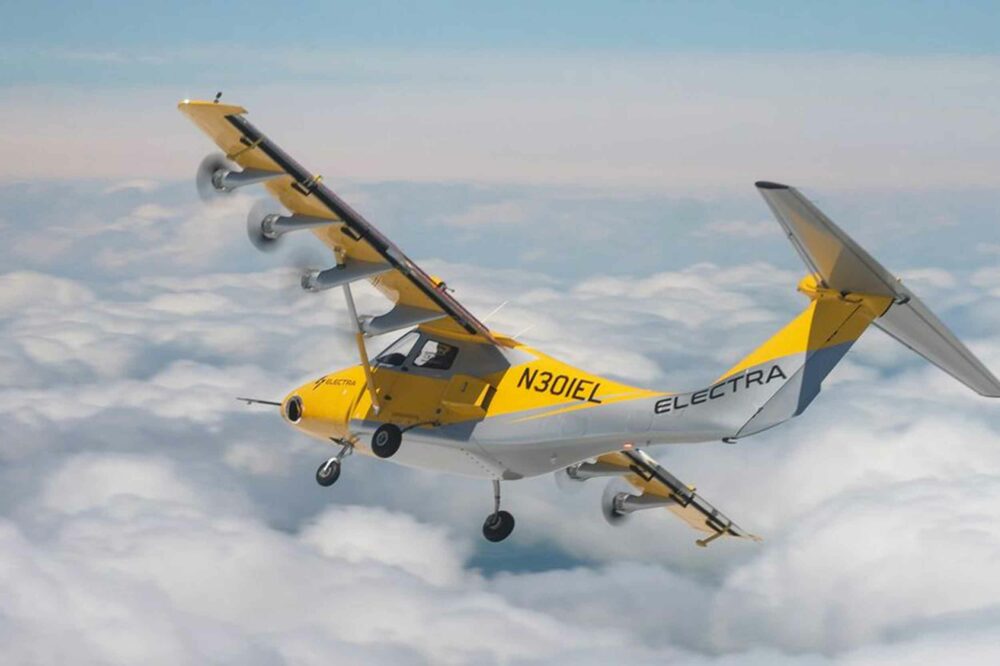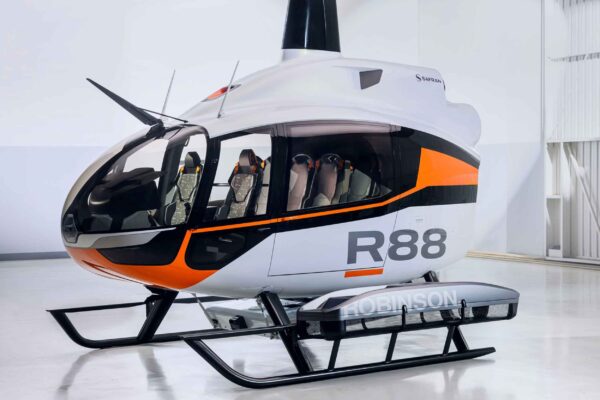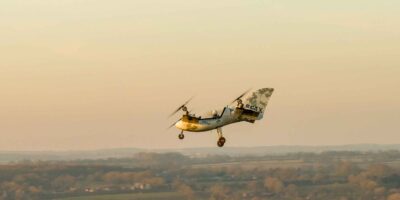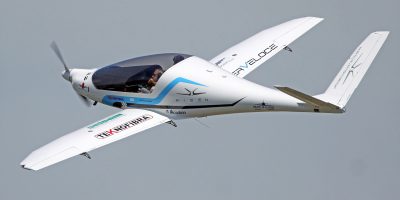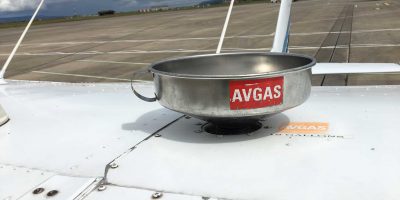+VIDEO Electric vertical take-off and landing (eVTOL) aircraft may be all the rage but hybrid-electric short take-off and landing (eSTOL) are more practical – and the first has made its maiden flight.
The piloted Electra EL-2 Goldfinch flew through April and May, the company revealed on Friday.
Electra’s blown-lift design uses eight electric motors to increase wing lift, allowing the eSTOL aircraft to take off and land in just one-tenth of the space needed by conventional aircraft.
“Today’s milestone is an incredible achievement as we’ve proven that our eSTOL aircraft has the capability to do what we said it could do – operate from spaces shorter than 300 feet,” said JP Stewart, Electra Vice President and General Manager.
[embedyt] https://www.youtube.com/watch?v=esTykmreHuQ[/embedyt]
“The aircraft handling at low-speeds has been exceptional and is matching our analysis well, building confidence in the predicted capability of the 9-passenger product design.
“We’ll continue to develop our technologies, including the ‘thrust-by-wire’ flight control system to allow us to fly even slower on approach and further improve the STOL takeoff and landing performance in the ongoing test campaign.”
The test flights, piloted by Cody Allee, took place through April and May 2024 at the Manassas Regional Airport and Warrenton-Fauquier Airport in Virginia. The longest flight lasted 1hour 43 minutes.
During the tests, the aircraft took off in less than 170ft and landed in under 114ft ground roll. The aircraft reached an altitude of 6,500ft, and it flew as slowly as 25kt on takeoff and landing.
Data and insights gained from the flight test program will inform the design of Electra’s nine-passenger commercial eSTOL aircraft, with entry into commercial service under FAA Part 23 regulations targeted for 2028.
Electra’s hybrid-electric propulsion system uses a combination of a turbogenerator and battery packs to power the aircraft’s electric motors.
The turbogenerator is sized for cruise, while the battery boosts power for takeoff and landing. This way, the turbogenerator can be small and always operates at its most efficient operating point to reduce fuel burn and lower maintenance cost.
Operators can choose to charge the battery in flight via the turbogenerator or re-charge on the ground where charging infrastructure is available. The turbogenerator supports up to 100% sustainable aviation fuels and future use of eFuels or hydrogen for zero-emissions flight.
Electra


